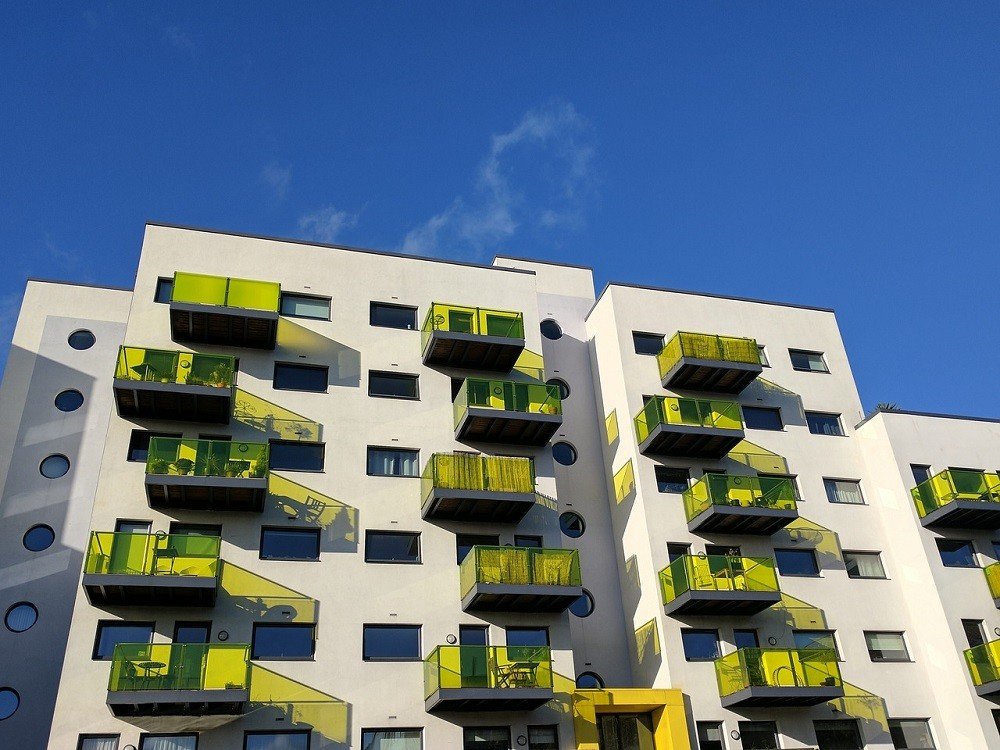Markets
How investing in multifamily real estate changed the market recently
Have you noticed all the real estate television shows are focused solely on fixing and flipping and give no love to buying multifamily properties?

How multifamily real estate reshaped the real estate market today? What constitutes a great investment? Which are the four phases of the real estate cycle? Discover the answers.
Have you noticed all the real estate television shows are focused solely on fixing and flipping and give no love to buying multifamily properties? I get it that fix and flip is sexy and produces great T.V., but does it qualify for a great investment or create generational wealth and passive income? We are going to tackle this question as well as why multifamily is crushing it and how you can jump in with both feet and join the party.
What constitutes a great investment?
Leverage
Leverage is the rocket fuel to creating massive wealth. There are very few investments where you can invest as little as $150,000 in capital and control a $1,000,000 asset. Try asking your financial advisor to extend you this type of leverage. I guarantee the next thing you’ll hear is a click on the other end and your phone line going dead.
You receive all of the benefits; cash flow, tax benefits, and appreciation. Why would a lender require a small down payment to acquire real estate? Simply put, the buyer is acquiring a revenue stream that covers the expenses of the property and throws off excess cash flow. The bank feels safe and protected with real estate. Bottom line: Multifamily real estate allows the investor to control more assets with less of his own capital, which will lead to an explosion of wealth.
Liquidity
Initially, real estate falters on the second criteria. So how do we tap into the equity of our property? We refer to the strategy as “refinancing” a property and it is one of the main reasons why multifamily real estate is crushing it.
We are currently in the process of refinancing both Lakeland Hills and The Hammond. The goal of the multifamily real estate is to increase Net Operating Income (NOI) by increasing the gross income and by decreasing the operating expenses. NOI is simply the gross income deducted by the operating expenses. Multifamily real estate allows the operator to force the appreciation of the asset by driving the NOI upwards.
Refinancing is an excellent strategy to access the equity you have accumulated in a property. Our infographic highlights the steps we took to refinance a property and withdraw over $1,600,000 tax-free. Dad always told me “It’s not what you make, it’s what you keep!”
Control
I have noticed a couple of stark differences between a multifamily real estate and other strategies. First of all, multis provide a monthly paycheck that we refer to as passive income or cash flow. I also call it a yield on my investment, and it is one of the most important reasons to invest in any type of real estate. Multifamily is one of the best vehicles to achieve cash flow.
Secondly, the multifamily real estate offers tremendous tax benefits. The government in their infinite wisdom realized there was no way they could provide adequate affordable housing. The solution was to provide huge incentives to real estate owners to step in and get the job done. Depreciation is an enormous tax benefit to real estate investing, especially when it is coupled with a cost segregation study.
Depreciation is basically a non-cash expense that allows owners to take a deduction on the income collected, thus lowering your tax obligation. I love the idea that my asset is appreciating while I get to depreciate it for tax purposes. The government also allows owners to employ cost segregation studies whereby the owner identifies personal property assets that are grouped with real property assets and separates out personal assets for tax reporting purposes.

The multifamily real estate offers tremendous tax benefits. Source
What does this mean? You are accelerating depreciation on many items from 27.5 or 39 years and reclassifying them to a shorter time period, as short as five, seven or fifteen years. You are writing off a larger portion of your depreciation expense and realizing more losses quicker. Remember what my dad said, it’s what you keep and cost segregation is the icing on the cake in multifamily real estate. Listen to Rich Dad’s advisor Tom Wheelwright discuss the tax benefits associated with investing in real estate.
Finally, the multifamily real estate offers the owner an economy of scale unparalleled in any other strategy. We love the fact that we have larger buildings with more tenants under one roof, versus having multiple single family homes scattered about, which increases the management and expense burden.
Four phases of the real estate cycle:
Recovery
The characteristics in this market phase include declining vacancy and no new construction. In my opinion, this is where the savvy investor can explore his or her wealth by “buying right”. Unfortunately, securing financing during this phase can be difficult and sentiment is still very weak. The contrarian investor thrives in this phase, and legends such as Sam Zell, commonly referred to as the “Grave Dancer”, created an empire while competitors were running for the exits. Most markets in the country have emerged from this phase and are well into the expansion and hyper supply phase.
Expansion
Many markets have been hovering in the expansion phase, a time of declining vacancy and new construction. It takes a few years for new inventory to come online, and during this period, rents and occupancy both expand. In 2015, rent growth was a robust 5.6% and occupancy stood at 96.1%, both highs. You may be thinking, “Here we go again!”
Let me tell you why you should still be crushing it with multifamily. We have been transitioning to a renter nation, with the aid of a shift in demographics and the Great Recession. Homebuyers are still feeling the ill effects of purchasing a home and getting hammered. There is no guarantee that buying a home and holding on for the long term will produce any gains. The economy plays a huge role in the expansion phase, and the economy is currently adding jobs to the markets we are invested in.
Two demographics that tend to rent are millennials and baby boomers. Every seven seconds a person turns sixty in the U.S., which creates more demand for our apartments. Millennials are entering the labor force saddled with student debt and are forced to rent, which creates another pool of prospective tenants. This demand has been fueling rent growth and is one of the main reasons why property values will continue to increase.
Vacancy rates, which fluctuate from one city to the next, are at the lowest since 1985, according to the U.S. Census Bureau and home ownership stands at a fifty year low.
Hyper-Supply
Trouble is brewing on the horizon. Vacancy begins to increase and new construction is still ramping up. This is a period when builders need to recognize what is occurring and should put the brakes on new construction. The party is starting to come to an end, but I would still buy in this cycle if I find a deal that fits my parameters: 10% cash on cash return, 8 Cap and a 1.3 Debt Coverage Ratio.
Deals are harder to come by in this phase, but we are still actively pursuing them. It’s all about the numbers, and we buy on ACTUAL numbers, analyzing the last twelve months of a property’s profit and loss statement.
Recession
Anyone remember 2008? The vacancy rate was increasing and new completions were being delivered to the market. The new construction came to a halt, but it was too late. There were fewer renters, while the addition of new inventory was coming onboard. This led to the rapid decline of rental rates, as well as occupancy rates, and ultimately accelerated the downturn in real estate values.
No one can predict the next recession, and our outlook on the industry continues to be bullish due to the demographics and low-interest rate environment. It ultimately comes down to the deal in front of you and how you can add value.
Take action with a list of tasks:
Decide what market to invest in, and begin to research the market. Focus on job growth, which should average at least 2% growth for two consecutive years. To access data for jobs in a market, Google the name of the city and “job growth or utilize the website www.bls.gov to gather employment data for a specific city. Look for companies announcing a move to a market, and become familiar with employers in your market.
Target markets that are experiencing household and population growth. Household growth is a more powerful barometer because households are the ones that become our clients. Study the demographics of the market and look for a higher percentage of millennial and baby boomers. The middle-aged demographic tends to have families and are more apt to become homeowners.
—
DISCLAIMER: This article expresses my own ideas and opinions. Any information I have shared are from sources that I believe to be reliable and accurate. I did not receive any financial compensation in writing this post, nor do I own any shares in any company I’ve mentioned. I encourage any reader to do their own diligent research first before making any investment decisions.

-

 Biotech5 days ago
Biotech5 days agoMedical Research in 2025: A Turning Point for Precision and Personalized Medicine
-

 Impact Investing2 weeks ago
Impact Investing2 weeks agoChristmas Plastic Waste and the Path to Circular, Low-Emission Solutions
-

 Africa5 days ago
Africa5 days agoDamane Cash and FMSCD Partner to Enable Cash Advance in Exchange Offices
-

 Business2 weeks ago
Business2 weeks agoThe TopRanked.io Weekly Digest: What’s Hot in Affiliate Marketing [Super Partners Review]


























You must be logged in to post a comment Login